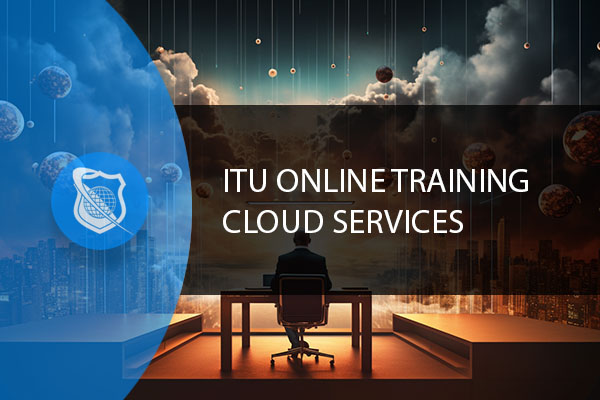Introduction
When it comes to the digital landscape, cloud computing has become a cornerstone for many businesses. One of the most critical aspects to consider is cloud hosting costs. This term encompasses a wide range of financial considerations, from cloud server cost to the cost of cloud services. While cloud hosting brings a multitude of benefits like scalability, flexibility, and enhanced performance, it’s essential to be aware of the financial commitments involved. Hidden fees and unexpected costs can quickly add up, affecting your budget and ROI. This article aims to demystify the often complex topic of cloud hosting costs, including cloud service cost and cloud computing fees, to help you make an informed decision when selecting a cloud service provider.
The Evolution of Cloud Hosting
A Brief History
Understanding the evolution of cloud hosting is crucial for grasping the intricacies of cloud hosting costs. In the early days of digital computing, businesses primarily relied on on-premises servers. These physical servers came with high upfront costs, including the cost of the hardware, software licenses, and ongoing maintenance fees. The shift towards cloud-based solutions, however, has significantly altered this landscape. Cloud computing ushered in a new era of efficiency and cost-effectiveness, reducing the need for physical infrastructure and thereby lowering cloud infrastructure costs. This transformation has made it easier for companies to scale their operations without the burden of exorbitant upfront costs.

Get Ahead In Cloud Computing
At ITU, we offer an exclusive Cloud Computing training series designed to prepare you for certification and/or to help you gain knowlege of all Cloud based platforms including AWS, Azure and Gooogle Cloud.
Get access to this exclusive Cloud Computing Training today.
Functionality and Features
Cloud hosting is not a one-size-fits-all solution; it offers a range of functionalities tailored to meet diverse business needs. These functionalities include data storage, computing power, and network resources, often available on a pay-as-you-go or subscription basis. This model offers incredible flexibility, allowing businesses to scale their resources up or down based on demand. However, this flexibility can be a double-edged sword when it comes to cloud hosting pricing and cloud server prices.
For instance, while you may initially sign up for what seems like a cost-effective package, additional needs like increased data storage, higher computing power, or advanced security features can inflate your overall cloud service pricing. Moreover, some providers charge extra for data transfer, API calls, or specialized services, contributing to the overall cloud service providers cost. Therefore, it’s crucial to understand not just the base cloud hosting price but also the potential hidden fees and additional costs that could arise based on your specific requirements.
Breaking Down Cloud Hosting Costs
Base Costs: What You See is What You Get
When you first start exploring cloud hosting options, the figures you’ll encounter most frequently are the base costs. These are the costs that cloud service providers prominently display on their websites and marketing materials. They usually include the cloud server cost, cloud service cost, and the cloud hosting price. These base costs often cover essential services like a certain amount of data storage, a set level of computing power, and basic network resources. While these figures give you a starting point for budgeting, they are just the tip of the iceberg. It’s crucial to dig deeper to understand the full scope of your financial commitment, including how much cloud server cost per month or year you can expect, as well as any additional cloud fees that might apply.
Hidden Fees: The Costs You Didn’t See Coming
While base costs are relatively straightforward, the hidden fees associated with cloud hosting can catch you off guard if you’re not careful. These are costs that aren’t immediately obvious and are often buried in the fine print of service agreements. Let’s delve into some of these hidden costs that can significantly affect the overall cost of cloud services.
Cloud Server Rental Costs
One such hidden fee is the cost of renting a server for a specific period, often referred to as cloud server rental costs. This is especially relevant if you’re using cloud services that charge based on the time your server is running rather than a flat monthly fee. These costs can add up quickly if you’re running multiple instances or if your usage exceeds the allocated time in your plan [1].
Cloud Computing Fees
Another category of hidden fees is cloud computing fees. These are additional charges for computing resources that go beyond the basic package. For example, if you require more CPU power or RAM for specific tasks, you may incur additional fees. These costs can also include charges for using specialized computing services like machine learning or data analytics.
Cloud Infrastructure Costs
Lastly, there are cloud infrastructure costs that encompass a range of additional services like load balancing, data transfer, and backup services. For instance, you might find that data transfer out of the cloud environment to an on-premises server or another cloud is subject to additional fees. Similarly, using advanced load balancing features or backup services can also add to your overall cloud service providers cost.
How to Calculate the True Cost of Cloud Hosting
Factor in Cloud Server Pricing and Cloud Servers Pricing
Calculating the true cost of cloud hosting is more complex than just looking at the initial price tag. It involves a multi-faceted approach that considers various elements, including cloud server pricing and cloud servers pricing. These terms may sound similar, but they can represent different aspects of your overall expenditure.
Cloud server pricing often refers to the cost of a single server, including its storage, CPU, and RAM capabilities. On the other hand, cloud servers pricing encompasses the broader scope of running multiple servers, possibly across different geographical locations. This could also include the cost of cloud services like data analytics, machine learning, or specialized software that your business might require.
It’s also important to consider the scalability of your project. As your business grows, you may need to increase your resources, which will affect your cloud server cost per month or year. Therefore, always factor in both current and future needs when calculating these costs.

Get Ahead In Cloud Computing
At ITU, we offer an exclusive Cloud Computing training series designed to prepare you for certification and/or to help you gain knowlege of all Cloud based platforms including AWS, Azure and Gooogle Cloud.
Get access to this exclusive Cloud Computing Training today.
Cloud Service Providers Cost: Comparing Apples to Apples
When it comes to cloud hosting, not all providers are created equal. Different cloud service providers have different pricing models, and what may seem like a cost-effective option at first glance could turn out to be more expensive when you factor in hidden fees like cloud computing fees or cloud infrastructure costs.
Some providers may lure you in with low base costs but make up for it with high hidden fees. These could include charges for data transfer, additional computing resources, or premium services like advanced security features. Therefore, it’s crucial to compare cloud service providers cost in a comprehensive manner.
Look beyond just the base cloud hosting price or cloud service cost. Examine the fine print for any additional fees that could apply, such as cloud server rental costs or specialized cloud computing pricing for services like data analytics or machine learning. Also, consider the cost of cloud server and how much cloud server cost could fluctuate based on your usage patterns.
By taking the time to thoroughly compare and analyze the costs from different providers, you’ll gain a more accurate understanding of what you’ll truly be paying for cloud hosting. This will enable you to make a more informed decision, ensuring that you choose a cloud service provider that offers the best value for your specific needs.
How Much Does Cloud Computing Cost, Really?
The Variable Nature of Cloud Computing Cost
When it comes to cloud computing, one size definitely does not fit all. The cost of cloud computing is a variable entity that can differ significantly based on a multitude of factors. These factors include but are not limited to data storage needs, computing power, and the types of additional services you may require, such as data analytics or advanced security features.
For instance, if your business relies heavily on data analytics, you’ll likely incur additional cloud computing fees for these specialized services. Similarly, if you need to scale your resources up or down frequently, the cloud server cost per month could fluctuate, affecting your overall cloud computing cost. Moreover, data transfer rates, API calls, and even the geographic location of your servers can impact the cost of cloud services, adding another layer of complexity to the overall cloud service pricing.
How Much is Cloud Computing: A Case Study
To provide a more concrete understanding, let’s consider a case study involving a medium-sized business in the e-commerce sector. Initially, the company estimated their cloud hosting costs to be around $500 per month, based on the base costs advertised by their chosen cloud service provider. This estimate covered the basic cloud server prices and cloud hosting pricing for their expected data storage and computing power needs.
However, as they delved deeper into their operations, they realized the need for additional services like load balancing and data analytics. These services, while enhancing performance and customer experience, came with their own set of cloud computing fees. Furthermore, the business experienced a surge in user traffic, leading to increased data transfer rates, which also added to the cloud service providers cost.
After accounting for these hidden and additional costs, including cloud server cost per month and cloud hosting fees, the actual expenditure was closer to $700 per month. This case study illustrates the importance of considering all potential costs, both obvious and hidden, to get a realistic understanding of how much cloud computing can cost your business.
Conclusion
Navigating the landscape of cloud hosting can be a complex endeavor, especially when it comes to understanding the full scope of cloud hosting costs. While the initial or base costs like cloud server prices and cloud hosting pricing may appear straightforward, the financial picture is often more complicated. Hidden fees, including cloud server rental costs, cloud computing fees, and additional cloud infrastructure costs, can quickly inflate your overall expenditure.
Moreover, the cost of cloud services isn’t static; it can fluctate based on your usage patterns, the specific services you require, and even the pricing models of different cloud service providers. Therefore, it’s essential to have a comprehensive understanding of both the visible and hidden costs. By doing so, you can better plan your budget, avoid unexpected financial setbacks, and ultimately, leverage cloud hosting to its fullest potential for your business needs.

Get Ahead In Cloud Computing
At ITU, we offer an exclusive Cloud Computing training series designed to prepare you for certification and/or to help you gain knowlege of all Cloud based platforms including AWS, Azure and Gooogle Cloud.
Get access to this exclusive Cloud Computing Training today.
Frequently Asked Questions About Cloud Hosting Costs
What are the base costs in cloud hosting costs?
The base costs in cloud hosting usually cover essential services like a certain amount of data storage, computing power, and basic network resources. These are the costs that are most prominently displayed by cloud service providers and give you a starting point for budgeting your cloud hosting costs.
How do hidden fees affect cloud hosting costs?
Hidden fees can significantly impact the overall cloud hosting costs. These are costs that are not immediately obvious and may include cloud server rental costs, cloud computing fees, and additional charges for services like data transfer or load balancing.
Can the cost of cloud services fluctuate?
Yes, the cost of cloud services can fluctuate based on various factors like your usage patterns, the specific cloud services you require, and even the pricing models of different cloud service providers. This variability is why it’s crucial to understand all the elements that contribute to cloud hosting costs.
What should I consider when comparing cloud service providers’ costs?
When comparing cloud service providers, look beyond just the base costs. Consider hidden fees like cloud computing fees, cloud server rental costs, and any additional services you may require. This will give you a more accurate picture of the true cloud hosting costs.
How can I budget effectively for cloud hosting costs?
To budget effectively, you need to consider both the base costs and any potential hidden fees. Make sure to read the fine print in service agreements and consult with the cloud service provider to understand all possible charges. This will help you plan your budget and avoid unexpected costs in cloud hosting.
You may also like:
Cloud Based Solutions : Transforming Today’s Business Landscape
What Cloud Storage Options Are Available : Types You Should Know About
On Premise Computing : Making Sense of On-Prem and Cloud-Based Systems
Cloud Services for Business : 10 Reasons Why Your Small Business Needs Cloud Storage

























1 thought on “Cloud Hosting Costs : The Hidden Fees You Should Know About”
Had no idea about the hidden costs, thank you so much!